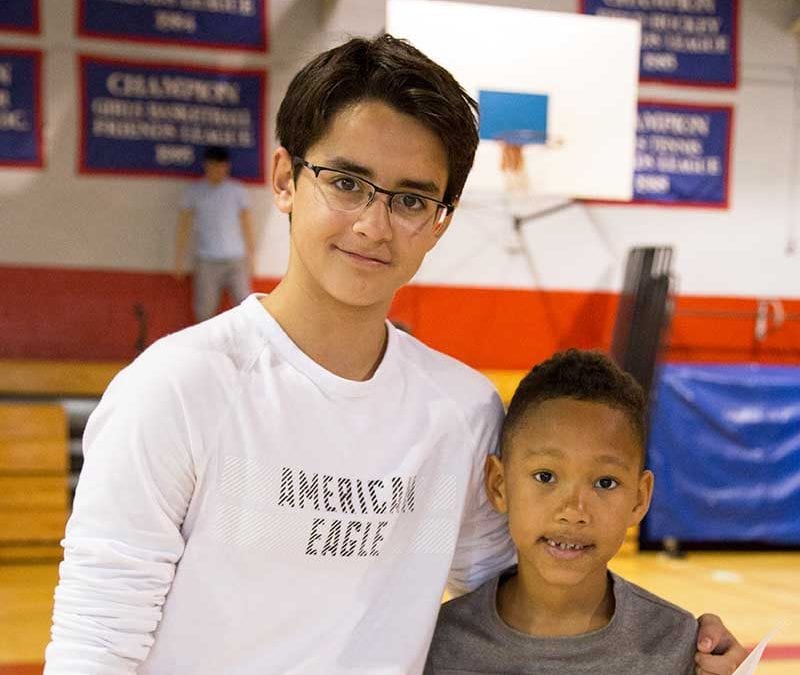From the desk of Middle School Director Kimberly Clarkson
Sense of community is often viewed as an intangible; something difficult to measure but that you can sense when you encounter a group with this strength at its core. At Moorestown Friends Middle School we work hard to create an environment where students feel safe, welcome, and accepted for who they are. Developing a strong sense of community within a school takes time, effort, and intentionality, particularly in middle school. At a time in their lives when they are seeking independence from adults and pushing boundaries, middle school students thrive when they are able to be a part of such a community of their peers.
In this four-part series, we will outline four key elements to building community:
- Start early in the year
- Make the time for experiences that build connections
- Create close circles of peer support as well as broader community connections
- Provide opportunities for leadership and mentorship that students can look forward to as a culmination of their middle school experience
Showcase Leaders and Mentors
Providing leadership and mentoring opportunities for the student elders in your school offers three clear, tangible benefits to your community. The most obvious benefit is to the elders, in this case the eighth graders at Moorestown Friends School, with the opportunity to exercise the leadership skills they have developed throughout their middle school experience. It allows them to feel pride and ownership over the community. A secondary clear benefit is to the students they are leading and mentoring. The experiences of students in fifth through seventh grades are enhanced by the incentives brought forth by the eighth graders, as well as by the support they receive throughout the school community from our eldest middle school students. A final, sometimes less widely acknowledged benefit, is to the whole Moorestown Friends School community. In Moorestown Friends Middle School, eighth grade students form committees to plan and implement programming throughout the community. 8th Grade Committees include groups which plan our middle school dances, support the work of our MS Office and A/V and Tech teams, develop special spirit days for students, re-envision the physical appearance of our hallways, and organize activities and supplies for our recess period. When younger students have a goal towards which they are working over time, they develop a sense of long-term investment in a community and their place in it. By seeing older students modeling what it means to grow and mature within our Moorestown Friends School Middle School, a clearer sense of our values community is developed.
While it often may seem like vibrant communities build themselves, in reality little is left to chance when it comes to creating a well-functioning, tight-knit community. Many view the middle school years as tumultuous. I prefer to think of them as a beautifully dynamic time of rapid change and development, during which students are primed to take on additional responsibility, learn and refine new skills, and support and grow with their peers. While building community in a middle school takes focused time and ongoing effort, the work we have done in our Moorestown Friends School Middle School already pays off in students and families who are more invested in and connected to each other.
Middle School Director Kimberly Clarkson is a seasoned educator with a broad range of experiences in independent schools. Prior to joining Moorestown Friends in 2015, Kimberly served at Sidwell Friends in Washington D.C., teaching social studies, math, and Spanish and acting as the Sixth Grade Coordinator and Middle School Diversity Coordinator. She earned a reputation for integrating service learning and innovative pedagogy into the classroom and was named a 2014-15 National Association of Independent Schools Teacher of the Future. Kimberly also taught Spanish and pre-algebra at Turning Point School in Culver City, CA and was a Spanish and Italian teacher at The Newport School in Kensington, MD. She holds a B.A. in psychology from Scripps College and an M.A. in secondary education from Loyola Marymount University.

